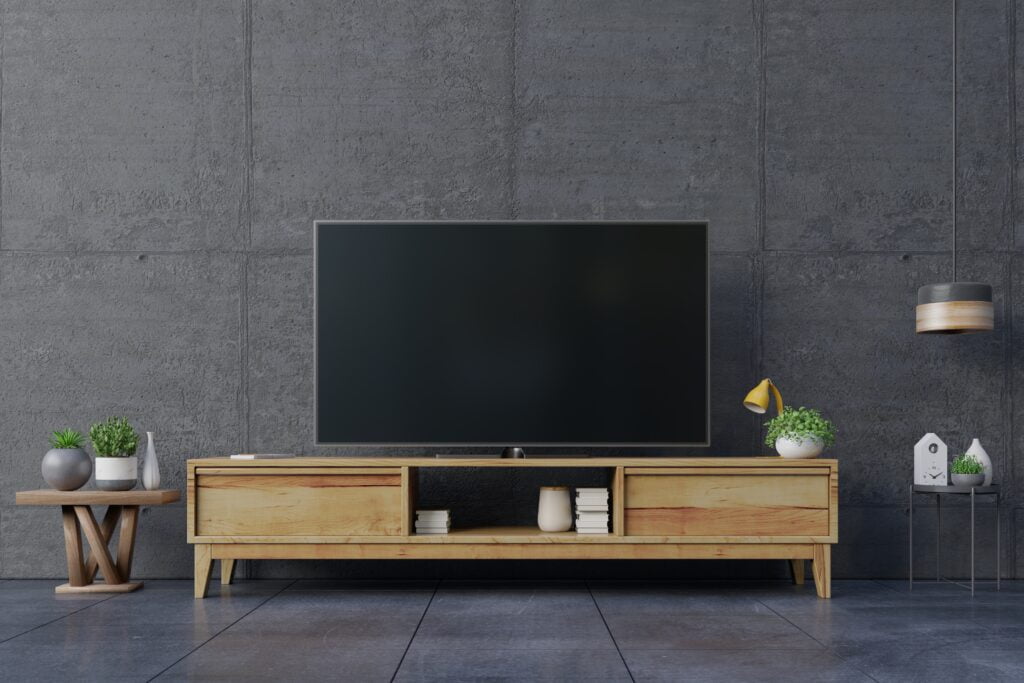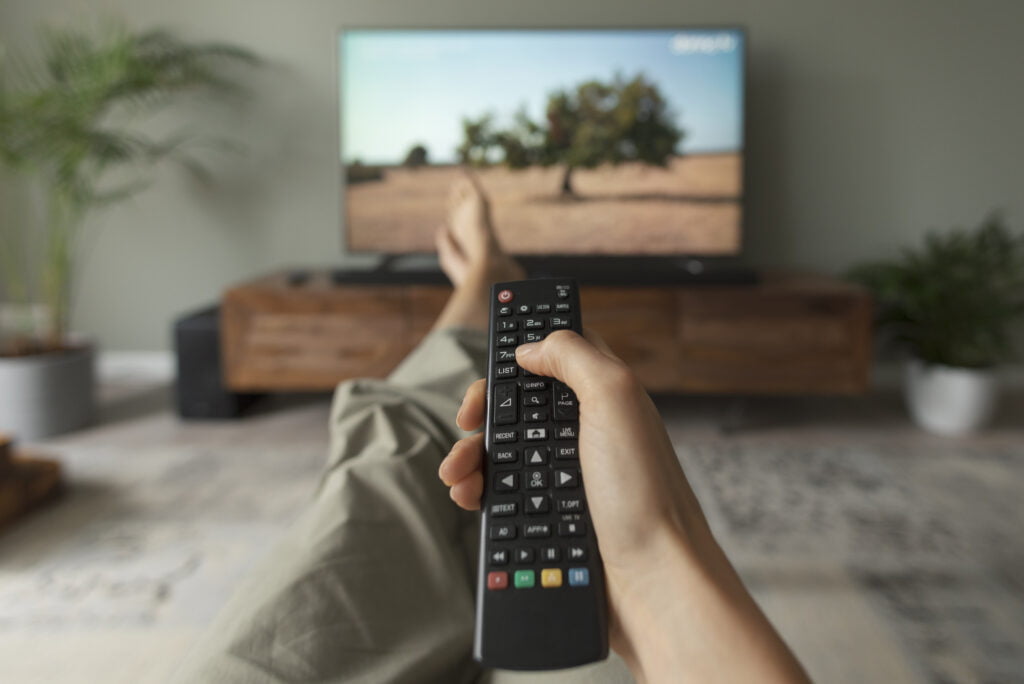So, you’re sitting down in front of your TV, ready to binge-watch your favorite show, and suddenly you’re met with a dreaded black screen. Frustrating, right? Well, fear not, because in this article, we’re going to walk you through some simple troubleshooting steps to help you fix that pesky black screen on your TV. Whether it’s a technical glitch or a simple connection issue, we’ve got you covered. So, grab your remote and let’s get your TV back to displaying all those vibrant colors in no time!
Check the Power Source
Power Outlet
The first step in troubleshooting a black screen on your TV is to check the power outlet. Make sure the TV is securely plugged into a working power outlet. Sometimes, due to loose connections or power fluctuations, the TV might not be receiving enough power, leading to a black screen. To ensure a proper connection, unplug the TV from the power outlet and plug it back in firmly. If this doesn’t resolve the black screen issue, try connecting another electronic device to the same power outlet to see if it is working properly.
Power Cable
Another potential cause of a black screen is a faulty power cable. Inspect the power cable for any visible damage, such as frayed wires or bends. If you notice any damage, it’s important to replace the power cable with a new one. Even if there is no visible damage, try using a different power cable to rule out the possibility of a faulty cable causing the black screen.
Remote Control Batteries
Sometimes, a black screen on your TV can be attributed to something as simple as dead remote control batteries. If the TV powers on but remains black, try replacing the batteries in your remote control. It is possible that the remote control is not sending the appropriate signals to activate the display. After replacing the batteries, point the remote control towards the TV and press the power button to see if this resolves the black screen issue.
Verify Connections
HDMI Cable
If you are using an HDMI cable to connect external devices to your TV, ensure that the cable is securely plugged into both the TV and the device. Sometimes, a loose or faulty HDMI connection can result in a black screen. Try disconnecting and reconnecting the HDMI cable at both ends to ensure a proper connection. Additionally, check if the HDMI port on your TV and the connected device are both working correctly.
Composite Cable
If you are using a composite cable (red, white, and yellow connectors), check that the cables are securely plugged into the corresponding colored ports on the TV and the device. Similar to HDMI cables, a loose or faulty connection can lead to a black screen. Gently wiggle the connectors to ensure they are snugly in place.
Component Cable
For component cables (red, green, blue, and red, white for audio), follow the same steps as with HDMI and composite cables. Check that the cables are securely connected to the appropriate ports on both the TV and the device. If necessary, unplug and reconnect the cables to ensure a proper connection.
Coaxial Cable
If you are using a coaxial cable to connect your TV to cable or satellite, make sure that the cable is firmly connected to both the TV and the provider’s network outlet. Check for any loose or damaged connectors and replace them if necessary. A poor connection can result in a black screen or poor reception.
SCART Cable
If you are using a SCART cable to connect your TV to another device, ensure that the connection is secure. SCART cables are less common nowadays, but if you are utilizing one, make sure the cables are plugged in correctly and that the connectors are not damaged. Wiggle the connectors gently to ensure a firm connection.
Resetting the TV
Power Cycling
Power cycling, or turning off and unplugging the TV from the power source for a few minutes, can often resolve minor software or hardware issues that may be causing the black screen. To power cycle your TV, follow these steps:
- Turn off the TV and unplug it from the power source.
- Wait for at least five minutes to allow any residual power to dissipate.
- Plug the TV back into the power source and turn it on.
Factory Reset
If power cycling doesn’t resolve the issue, you may need to perform a factory reset. This process will restore the TV to its original factory settings, erasing any personalized settings or configurations. To perform a factory reset, refer to your TV’s user manual for specific instructions, as the process may vary depending on the make and model of your TV. Keep in mind that a factory reset should be used as a last resort and only if all other troubleshooting steps have failed.
Adjust Display Settings
Brightness
Sometimes, improper display settings can result in a black screen. If the TV seems to be powered on, but the screen remains black, adjust the brightness settings. Using the remote control, locate the settings or menu button and navigate to the display settings. Increase the brightness level to see if the screen becomes visible. The exact method for adjusting the brightness may differ depending on your TV’s make and model.
Contrast
Similar to brightness, adjusting the contrast settings can also resolve a black screen issue. Access the TV’s settings menu and locate the contrast settings. Increase the contrast level gradually and observe if the screen becomes visible. Keep in mind that excessively high contrast levels can negatively affect picture quality, so make sure to find a balance that works best for your TV.
Sharpness
In some cases, incorrect sharpness settings can result in a black screen. Navigate to the TV’s settings menu and locate the sharpness settings. Adjust the sharpness level to see if the screen becomes visible. Experiment with different settings until you find a sharpness level that provides a clear and visible display.
Checking External Devices
Cable/Satellite Box
If you have connected a cable or satellite box to your TV, ensure that it is powered on and properly connected. Check the cables running from the box to the TV and verify that they are securely plugged in. If necessary, power cycle the cable or satellite box by unplugging it from the power source, waiting a few minutes, and plugging it back in. This can help resolve any temporary issues that may be causing the black screen.
DVD/Blu-ray Player
For DVD or Blu-ray players, ensure that the device is powered on and connected to the TV correctly. Check the audio and video cables for any loose connections and plug them in securely. If you are using HDMI to connect the player to the TV, refer back to the HDMI cable troubleshooting steps mentioned earlier. Restart the player if necessary to rule out any temporary glitches.
Gaming Console
If you are connecting a gaming console to your TV, double-check that it is powered on and connected properly. Ensure that the audio and video cables are securely plugged into both the console and the TV. If you are utilizing an HDMI connection, refer to the HDMI troubleshooting steps mentioned earlier. Restart the console if needed to eliminate any software-related issues that may be causing the black screen.
Updating Firmware or Software
TV Manufacturer Website
Sometimes, a black screen issue can be resolved by updating the firmware or software of your TV. Visit the website of the TV manufacturer and search for the specific model of your TV. Look for any available firmware or software updates and follow the instructions provided to download and install them. Updated firmware can often address bugs or compatibility issues that could be causing the black screen problem.
Automatic Software Update
Many modern TVs have an automatic software update feature. Access your TV’s settings menu and navigate to the software update section. Enable the automatic update option if it is not already turned on. This will ensure that your TV receives the latest software updates, which can help resolve issues like a black screen. If your TV already has this feature enabled, check if any updates are available and install them accordingly.
Replacing Faulty Components
Inverter Board
If you have tried all the previous troubleshooting steps and the screen remains black, there may be a problem with one of the internal components of your TV. The inverter board, responsible for supplying power to the backlight, could be faulty. Replacing the inverter board is a complex task that typically requires professional assistance. Contact a qualified technician or service center to diagnose and replace the faulty inverter board, if necessary.
T-Con Board
The T-Con (Timing Control) board controls the timing and signals sent to the pixels of the display. If this board becomes damaged or malfunctions, it can result in a black screen. Replacing the T-Con board should be done by a professional, as it involves handling sensitive electronics. Consult a certified technician or contact the TV manufacturer’s customer support for further assistance.
Power Supply Board
The power supply board is responsible for distributing power to various internal components of your TV. If it fails or malfunctions, it can cause a black screen. Replacing the power supply board is a complex process that requires advanced technical knowledge. It is advisable to seek the help of a certified technician or contact the TV manufacturer’s customer support for guidance on replacing the faulty power supply board.
Main Board
If all else fails, it is possible that the main board of your TV is faulty. The main board handles various functions of the TV, including processing video signals. A malfunctioning main board can cause issues such as a black screen. Replacing the main board is a delicate task that should be done by a professional. Contact a certified technician or the TV manufacturer’s customer support for assistance in diagnosing and replacing the faulty main board.
Seek Professional Help
TV Manufacturer Customer Support
If you have exhausted all troubleshooting steps and are still experiencing a black screen on your TV, reaching out to the TV manufacturer’s customer support can be a helpful next step. They can provide valuable guidance specific to your TV model and offer further troubleshooting advice. They may also be able to recommend certified technicians or service centers in your area if the issue requires professional assistance.
Certified Technician
If all other attempts to fix the black screen issue have been unsuccessful, it is time to consider contacting a certified technician. They have the expertise and equipment to diagnose and repair complex technical issues related to your TV. Look for reputable service centers or technicians who specialize in your TV’s brand and contact them for assistance. They will be able to assess the problem and provide a solution or recommend appropriate repairs.
Dealing with Backlight Issues
Check Backlight Connections
If the screen remains black, the issue could lie with the backlight. LED and LCD TVs have backlighting that illuminates the screen. Check the connections between the backlight and the power source. Ensure that the cables are securely connected and that there are no loose or damaged connections. A faulty backlight connection can result in a black screen. If necessary, seek professional help to inspect and repair the backlight connections.
Replace Faulty Backlight
If the backlight itself is faulty, it may need to be replaced. This can be a complex and delicate process that requires expertise in handling electronics. Contact a certified technician or the TV manufacturer’s customer support to discuss the issue and explore options for replacing the faulty backlight. They will be able to guide you through the necessary steps to restore the functionality of your TV.
Consider Environmental Factors
Sunlight Reflection
Sometimes, a black screen on your TV can be attributed to external factors like sunlight. If sunlight or other strong direct light sources are falling directly on the screen, it can make the display appear black. Consider the positioning of your TV in relation to windows or other light sources. Adjust the curtains or blinds to block out excessive light or reposition the TV to minimize glare or reflection. This can help improve the visibility of the screen.
Electromagnetic Interference
Electromagnetic interference from nearby electronic devices can sometimes cause a black screen on your TV. Microwaves, cordless phones, and routers are common sources of electromagnetic interference. Position your TV away from these devices or relocate the devices to minimize any potential interference. If you notice that the black screen issue occurs when a specific device is in use, try turning off or moving that device to see if it resolves the issue.
In conclusion, experiencing a black screen on your TV can be frustrating, but by following these steps and troubleshooting strategies, you can identify and resolve the issue. Start by checking the power source, verifying connections, and adjusting display settings. If the problem persists, explore options such as power cycling, factory resetting, or updating firmware or software. If these steps do not yield results, it may be necessary to replace faulty components or seek professional help. Remember to consider environmental factors that could affect the visibility of your TV’s screen. With perseverance and the appropriate guidance, you can get your TV back up and running again.



